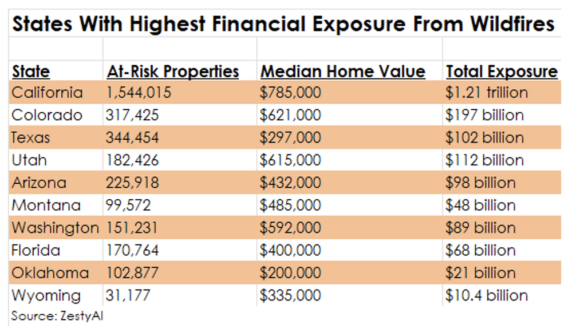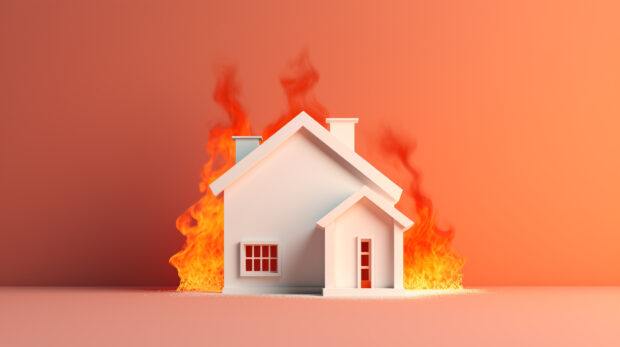While Western wildfires have dominated disaster news for decades, new analysis using artificial intelligence shows millions of homes across the country—even in the swampy Southeast—are at risk for wildfires.
ZestyAI found that $2.15 trillion worth of U.S. residential property is at high risk of wildfire damage. The study assessed 126 million properties nationwide and revealed that 4.3 million individual homes face heightened wildfire risk.
“Wildfires are threatening more properties than ever before, with billions of dollars in exposure even in areas many people don’t associate with fire risk,” said Attila Toth, founder and CEO of ZestyAI.
The study used AI models trained on over 2,000 past wildfires and mapped exposure at the property level, integrating satellite and aerial imagery, topography, and structure-specific characteristics. The report found growing development abutting wildlands and intensifying climate conditions are driving higher wildfire risk in states like North Carolina (4.6% of homes at high risk), Kentucky (2.9%), Tennessee (2.3%), and even South Dakota (11.0%).
Unsurprisingly, California has the highest total exposure for wildfire damage, with over 1.54 million homes at risk and $1.21 trillion in total exposure. California was followed by Colorado, Texas, Utah, and Arizona.

Because many areas are not historically prone to wildfires, homeowners may be unaware of risks and underinsured, Toth said. One in eight U.S. homeowners already lacks adequate insurance coverage.
On the other hand, Toth said, “Insurers have traditionally relied on broad, regional models that don’t account for individual property characteristics. That means some homeowners are denied coverage even when their true risk is much lower than their neighbors.”
Toth said that AI-driven risk analytics can mean more accurate and efficient assessments of wildfire exposure. Granular, property-specific insights can help insurers make smarter underwriting decisions—keeping coverage available in high-risk areas while ensuring that homeowners who take mitigation steps are recognized.





















 Data Insight: Who’s Growing in Personal Lines?
Data Insight: Who’s Growing in Personal Lines?  States’ AI-Related Legislation Aimed at Insurance Is ‘Unfounded,’ Says NAMIC
States’ AI-Related Legislation Aimed at Insurance Is ‘Unfounded,’ Says NAMIC  Property Data and Info Provider CoreLogic Rebrands to Cotality
Property Data and Info Provider CoreLogic Rebrands to Cotality  Gen AI Is Shaking Up Underwriting, But Can It Replace Human Judgment?
Gen AI Is Shaking Up Underwriting, But Can It Replace Human Judgment? 




